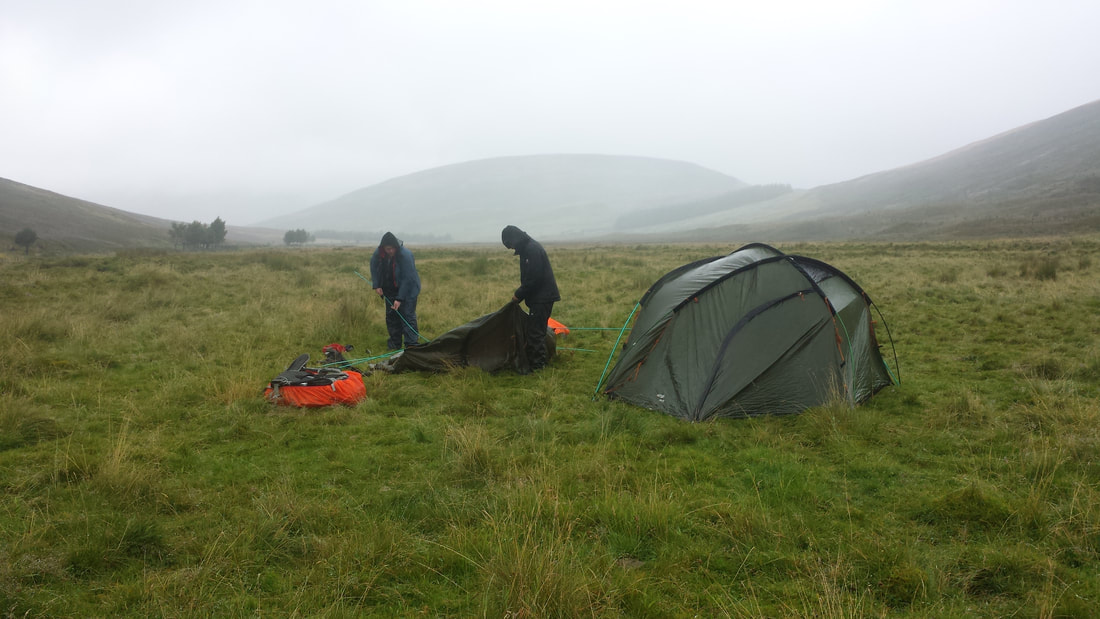As part of my business, I supervise Duke of Edinburgh expeditions. Some are blessed with wall-to-wall sunshine, while others have been subjected to torrential downpours and waterlogged campsites.
What struck me with surprise is the way groups react to bad weather – they often perform better, both individually and as a team!
When everything is sunny, groups walk slowly. They take long breaks in the sunshine, and often use this time to complain about how hard it is, how their feet hurt, how their rucksack is bruising their shoulders. With multiple and frequent rests, the day drags on and can feel really long.
It made me reflect - how is true in other parts of life? When things are feeling really tough, perhaps it actually enables you to perform better? That a bit of discomfort can, in fact, trigger determination and commitment to reach an outcome quickly. That when you are needing to do a task that outwardly seems pretty rubbish, that this will in fact encourage you to do it in the quickest, most efficient way possible?
Maybe one to think about next time you’ve got something tough to face?
NLP has a huge number of tools to help us build resilience, and I’ll share them below.
Definitions of Resilience
1. "The ability of a material to return to its original form, position, etc., after being bent, compressed, or stretched."
Although talking about materials, this is a great metaphor for how it feels when you’re facing something difficult or challenging! I’m sure we’ve all felt bent, compressed or stretched by life events before.
2. "The ability of a person to adjust to or recover readily from illness, adversity, major life changes, etc."
Notice it doesn’t say “nothing difficult ever happens.” This definition acknowledges that ‘sh*t happens’ to the best of us – it’s how we’re able to deal with it that counts. Also notice that it doesn’t say we have to go back to how things were ‘before.’
Resilience is the ability to adapt to stuff that happens in our lives, rather than pretending that stuff doesn’t happen. And while the phrase ‘bounce back’ is often applied to being resilient, I think its also equally applicable to ‘bounce forward’ – to go somewhere different and new instead of back to how things were before.
Organisations have resilience too. Businesses of all sizes are constantly adapting to market forces and human behaviour. Indeed, the whole UK system (and wider global system) is adapting after a period of turbulent leadership, unstable economics, wars, as well as trying to recover from a global pandemic.
It’s no wonder that Resilience is a hot topic at the moment!
The Two Types of Resilience
Short-term, in-the-moment resilience is what you need when you’re faced with a challenge right in front of you. Examples might include: being put on the spot in a business meeting; having an argument with a loved one; dealing with an incident or accident, or watching your toddler throw the plate of food you’ve just cooked all over the floor. Any time your fight or flight instincts are switched on. You need some instant resilience to deal calmly and confidently with the situation.
Long-term, over-time resilience is different. This is needed in situations that are ongoing, continually wearing you down and stressing you out. Examples might include: ongoing stress at work, chronic health problems for you or someone you care for, feeling stuck in a bad relationships or job etc. It’s often the case that any one thing that happens on a given day is easy enough to cope with, but when you pile them all on top of one another, it feels like too much to cope with.
How Can NLP Help to Build Resilience?
The good news is there is a lot you can do to improve your resilience!
Short-term resilience
Change Your State. The very basics of NLP cover how to manage our emotional state to something more resourceful. There are many ways to do this - the simplest is to pause and take a breath. One (or more) deep breaths, with feet stably grounded, can do wonders to put your firmly back in control of yourself, and the situation. Here are some other ways to change your state:
1.Change your body language.
If you’re sitting hunched over, or have your head in your hands, this sends powerful messages to the rest of you that you’re not in control. Sit up straight, or stand tall and strong, or even take a ‘power pose’ – something like Wonder Woman pose, with hands on hips.
2.Model someone or something
If you don’t feel like you have the resources you need to deal with the challenge, consider who does? A confident colleague at work? A friend or loved one? You can even draw inspiration from the animal kingdom and channel the essence of a Lion, or Bear, or Wise Old Owl. Pick someone or something that has the resources you need. How would they cope right now? What would they do? Model their calm, confident persona and before long, you’ll start to feel it.
3.Change your mind.
When we are faced with something challenging or overwhelming, our internal representations are often overwhelming too. Pictures of the situation in our mind will appear huge and very close to us. Sounds may be deafening and continual. Feelings will feel intense and persistent. Use a simple NLP tool like ‘Shrink the Picture’ to change the way you are representing the problem in your mind. Make the pictures smaller, turn the volume down and less the intensity of feelings – the overwhelm should pass.
4.Add some self-talk.
Add a little mantra, like “You Can Do This” “You’ve Got This” “Keep breathing” can be really useful to change your thought processes and make you feel like you’ve got a supportive friend, rather than a critical bully (as we often talk to ourselves.)
1.Change your Mindset. Use the NLP Presuppositions.
While you may not be able to change the situation, the right presupposition can help you to change your mindset about the situation. Here’s just a few I’ve found helpful.
“There’s a Solution to Every Problem” may help move you from a mindset of stuckness into a mindset where you’re able to look for, and notice, solutions.
“There’s a Positive Intention Behind Every Behaviour” may help to bring insight and understanding, and even forgiveness into a difficult relationship. If you’re able to find a value in common with someone, their positive intention, it can help to resolve conflicts, even if their behaviour to meet that value is not ideal.
“There’s No Such Thing As Failure, Only Feedback.” If you’re able to shift your mindset to look for the learning in any difficult situation, you can move forwards from it, embodying a mindset of continual growth rather than failure.
2.Self-Care
The saying goes “You can’t pour from an empty cup” and it’s true.
Self-care looks very different to different people, and also for the same person on different days. It may be a slab of chocolate and a warm bath, or it may be going for a run and cooking a healthy meal. The most important things are to a) tune into what you really need to ‘fill your cup’ right now, and b) set the boundaries with yourself and others around you to make it happen.
3.Make a Well-Formed Outcome.
A well-formed outcome makes any goal much more likely to be achieved . It enables you to state a goal in ‘towards’ language, align it with what’s really important to you, explore the ecological impact on you and others, and consider the time, money, effort and opportunity costs in advance. With all this thinking done, you are more committed to the goal, and more able to weather the storm, adapt and deal with any bumps in the road – you know the outcome you want and you’re going for it.
Get in Touch To Learn More
If you're interested in building more resilience for yourself, consider attending the NLP Diploma course. Change Your Life with NLP (4-day Diploma)


 RSS Feed
RSS Feed